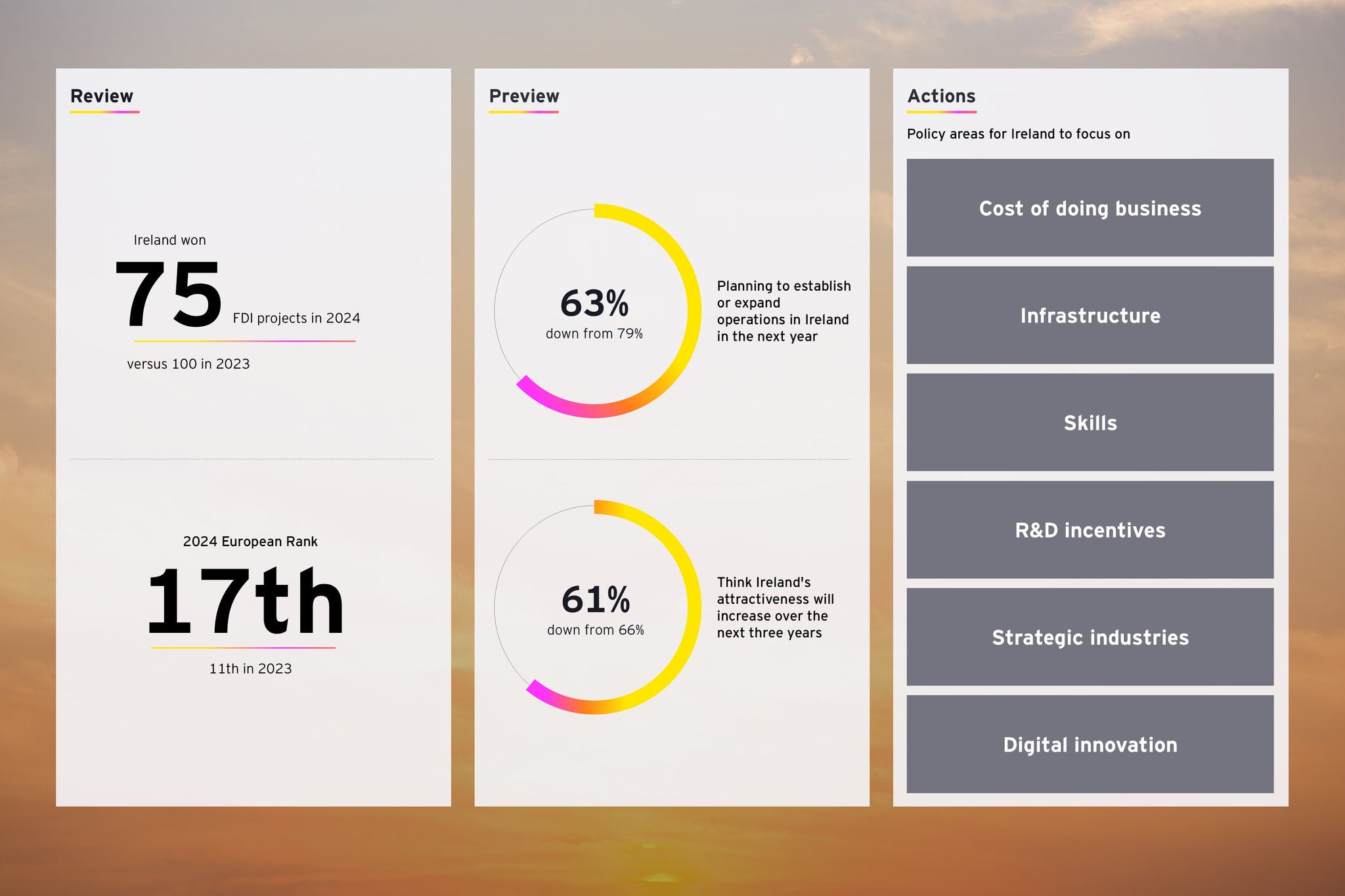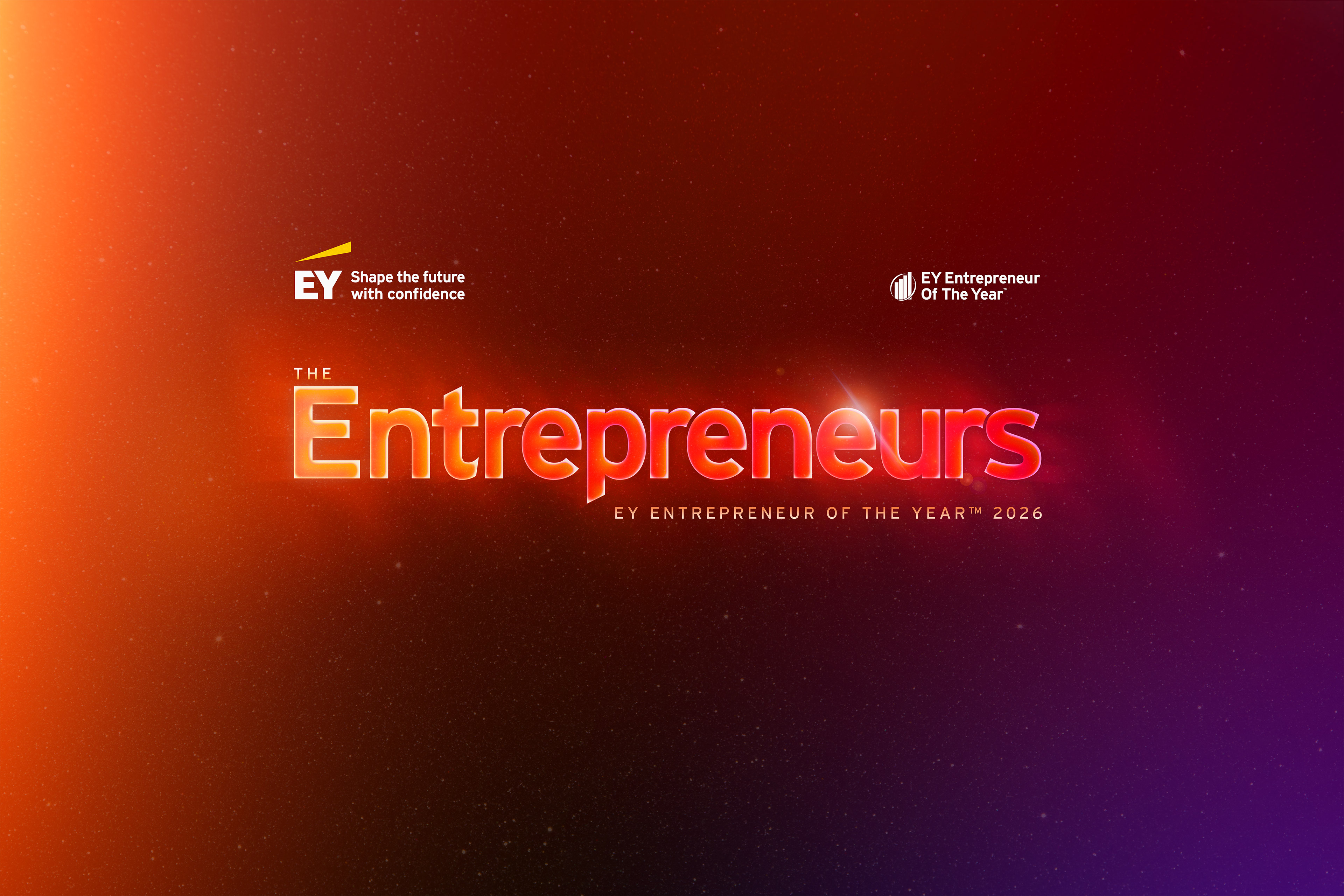EY refers to the global organization, and may refer to one or more, of the member firms of Ernst & Young Global Limited, each of which is a separate legal entity. Ernst & Young Global Limited, a UK company limited by guarantee, does not provide services to clients.

Policy focus on competitiveness is needed now more than ever before amidst a more competitive landscape for cross-border investment.
In brief
- Despite slowdown, R&D projects accounted for 25% of total investments, underscoring Ireland’s status as a knowledge economy.
- Ireland maintains a better ranking in the pharmaceutical and finance industries compared to its overall standing in Europe.
EY’s European Investment Monitor shows that FDI in Europe fell for a second consecutive year in 2024, to its lowest level in the past nine years. Against this backdrop, Ireland’s place in the rankings has also declined. However, project numbers alone don’t tell the full story. While a drop in rankings isn’t ideal, there are positive messages and definite bright spots with the data. We need to understand the origin, sector, and nature of investments, and the sentiment of global investors towards Ireland as a destination for FDI. The 2025 EY Ireland Attractiveness Survey reviews recent FDI performance and also previews what lies ahead.
EY Ireland Attractiveness Survey 2025
Despite a slowdown in FDI announcements, our research points to strengths in several areas. Ireland maintains a better ranking in the pharmaceutical and finance industries compared to its overall standing in Europe, while the rise in R&D projects - accounting for 25% of total investments in 2024 - highlights Ireland's position as a knowledge economy.
One of Ireland’s intangible assets in the FDI arena is the strong linkage that exists between government, the investment promotion agencies, business, and academia.
Feargal de Freine
EY Ireland Assurance Partner and Head of FDI

Amid a more competitive landscape for cross-border investment, investors have highlighted some risks to Ireland’s prospects for 2025 and beyond. These include concerns around cost competitiveness, global factors including geopolitical tension and trade protectionism, and infrastructure constraints. Some of these factors are beyond Ireland’s control but others can be addressed with strategic and decisive action.
Global headwinds abound and while Ireland is facing into these from a position of strength, with record high employment and fiscal buffers in place, there is no room for complacency. A policy focus on competitiveness is needed now more than ever.
Loretta O’Sullivan
EY Ireland Chief Economist and Partner
How EY can help
-
EY Economic Advisory will provide comprehensive economic services that help public and private sector clients navigate the road ahead. Find out more.
Read more


